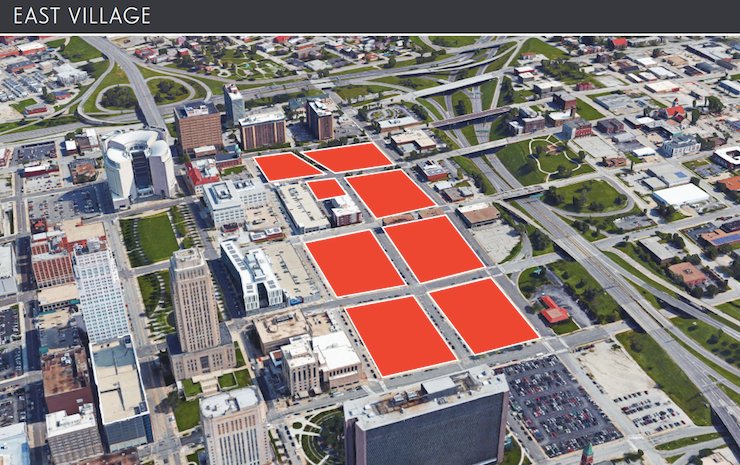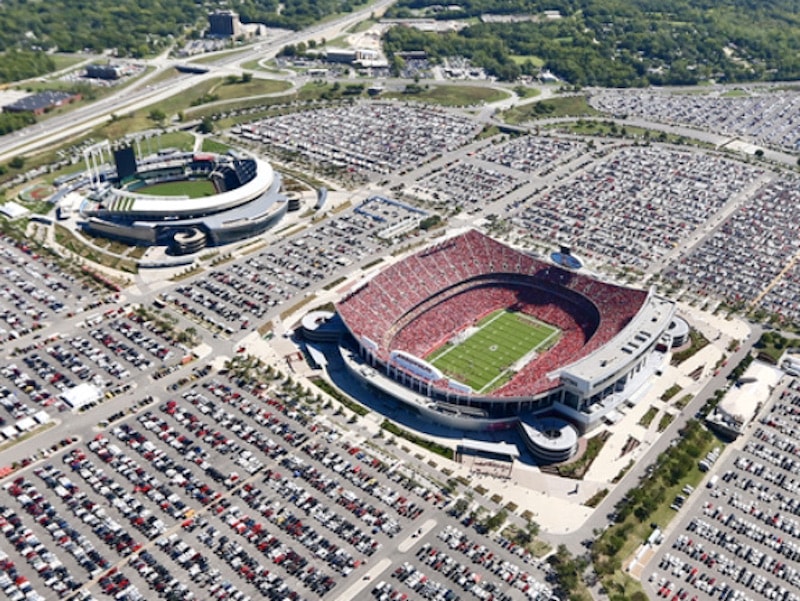Royals Pitch $2 Billion Downtown Ballpark Development, ‘Largest Public-Private Investment in KC History’

Published November 15th, 2022 at 11:55 PM
By Kevin Collison
Royals owner John Sherman officially announced what’s long been expected Tuesday–he intends to relocate his ball club to downtown as part of what he described as a $2 billion redevelopment plan.
“A new home would be a far better investment, both for local taxpayer dollars already supporting our facility, and for the Kansas City community,” Sherman said in a letter posted on the Royals Twitter account.
“Our vision is to not just build a facility that does justice to the spirit of The K. We want to construct a world-class experience – a new ballpark district and all that comes with It – one that is woven into the fabric of our city, can host events and concerts, and boosts our local economy.”
While Sherman did not announce a site, he said there are several leading locations, both in downtown and “nearby” for what he described as a redevelopment that would include not only a ballpark, but retail, office, hotel and residential projects including affordable housing.
“Each site offers unique opportunities. We look forward to seeking input from the public over the coming months about our vision to best serve our residents and build on the momentum our city is experiencing.”
One of the prime locations the Royals have been considering is the East Village district, an eight-block development site northeast of City Hall.
Other locations that have been mentioned include the 18th and Troost area on property controlled by the Kansas City Area Transportation Authority near the 18th & Vine District, and in the East Crossroads where the former Kansas City Star printing plant is located.

The East Village redevelopment area occupies eight blocks near City Hall.
In his letter, Sherman said the development he is envisioning would include more than a ballpark, but restaurants and shops, office space, hotels, and a variety of housing opportunities.
“The proposed ballpark district would become a new home for Royals fans far and wide – both inside a state-of-the-art ballpark and in the revitalized surrounding area,” he wrote.
“We will marry the traditions of The K with a better experience for our fans with a mixture of public and private investment, including our own intention to invest hundreds of millions of dollars directly into the ballpark and the ballpark district, the long-term vision remains a work-in-progress.”
The Royals are believed to be looking at the Atlanta Braves as a model for a larger redevelopment anchored on a ballpark.
The Braves built more than a 41,000-seat ballpark in a public-private deal with suburban Cobb County when it chose to leave downtown five years ago.
As part of their big move, the ownership acquired 90 acres adjoining the ballpark and partnered with developers to build a nine-story, regional Comcast headquarters, a 264-room Omni Hotel, 4,000-seat concert venue, restaurants, bars and residences.
Sherman described the Royals project and surrounding redevelopment as being a $2 billion venture that would be the “largest public-private development project in Kansas City history.”
He said the development would not require any increased taxes on Jackson County residents, who already are paying a 3/8ths cent sales tax to maintain the Truman Sports Complex. The assumption would be county voters would extend the current sales tax.

An overhead view of a potential Royals ballpark that would include other projects as well such as offices, residential and retail. (Rendering from Royals)
He said “hundreds of millions of dollars” in private investment would be part of the project and the State of Missouri would be asked to provide funding as well as the federal government.
One benefit of the East Village location is it’s located within a federal opportunity zone, a designation that would allow private investors in a ballpark project to obtain federal tax credits.
“To accomplish this move, our plans will be contingent on continuing our public-private partnership and investment with multiple local jurisdictions and the State of Missouri,” Sherman wrote.
He estimated construction of the redevelopment would create 20,000 construction jobs or $1.4 billion in labor income, and have a $2.8 billion economic impact.
“We anticipate that the inaugural year of the new ballpark will drive approximately $185 million more in regional economic output than The K does today,” he wrote.
“Greater regional visitation will sustain more than 600 new jobs, and spending at the new ballpark district and across the region will drive more than $60 million in new tax revenue over the first decade.”
Sherman said the new ballpark would retain its iconic fountains that have made Kauffman Field one of the more attractive ballparks in America. There also has been speculation the ballpark would be smaller than The K with 28,000 seats. The K seats 38,000.

The Truman Sports Complex opened in 1972-73 and is managed by the Jackson County Sports Complex Authority. (Image from JCSCA web page)
“We also envision incorporating our Kansas City fountains, the Royals’ crown and our team’s rich traditions and history in a new ballpark district,” he wrote.
“The proposed ballpark district would become a new home for Royals fans far and wide – both inside a state-of-the-art ballpark and in the revitalized surrounding area.”
“A new home would be a far better investment, both for local taxpayer dollars already supporting our facility, and for the Kansas City community.
If this proposal moves forward, we see this development as another storied chapter for Kansas City. We’d very much look forward to writing it together.”
One big question mark surrounding the Royals is what will the Chiefs be seeking at Truman Sports Complex. Both teams’ leases at the facility run through 2031.
It’s believed the Chiefs will want to redevelop the Kauffman Field site as an entertainment district should they decide to renovate Arrowhead or build a new stadium.
Bringing the Royals downtown has been a longtime goal for downtown advocates who have pointed to how similar projects have benefit other cities including Denver, Minneapolis, Cleveland and Baltimore.
The Downtown Council made a major push in 2005 to encourage former Royals owner David Glass to relocate the team even to the point of doing a study to demonstrate its benefits.
While Glass allowed the effort, which included several major downtown business and civic leaders to proceed for awhile, he ultimately decided to renovate Kauffman instead as part of the current lease deal.


